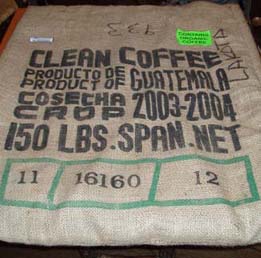
You can buy bags made of hemp, jute, kenaf, linen and flax for earthbag building. Most burlap bags are made with jute. They’re usually more expensive than poly or mesh bags and have been treated with unhealthy mold inhibitors to prevent rot and insect problems. I can’t say for sure, but it’s possible bags for coffee, grains, nuts and other foods products may be all natural, otherwise the chemicals would taint the flavor. Maybe someone has extra time to research this possibility.
Recycled bags made of natural fibers would have the least environmental impact of all bags. The drawbacks include added time and effort tracking them down and the extra cost and labor stabilizing the fill material, so the soil remains a strong building block when the bag inevitably decays. This is typically done by adding 5%-10% hydrated lime or cement to dry soil, mixing well and then moistening lightly before filling and tamping bags. Other options for stabilizing soil include: alker technology (gypsum and lime), caliche, or possibly microbial-induced calcite precipitation (MICP).

Is there concern then that the burlap will decay even after some sort of a plaster has been applied?
It could, that’s why I suggested stabilizing the soil. Then it wouldn’t matter if the burlap rotted.
Burlap could last many years in dry climates like Arizona and New Mexico.
Anyway, the intent of the blog post was to give people more choices.
I’m good with choices. But it doesn’t sound like burlap would be a choice though for non-stabilized perlite or scoria in a wetter climate even with a thick plaster finish over it then.
I agree. Loose fill insulation would require durable bags.
Owen,
Have you seen the Christian Science Monitor story about earthbag building in Gaza?
David
What’s the link?
Here’s what we’ve written: http://earthbagbuilding.wordpress.com/2010/07/19/earthbag-building-is-taking-off-in-gaza/
Try to find 18″x30″ bags measured when empty. That’s the best size for most earthbag projects.